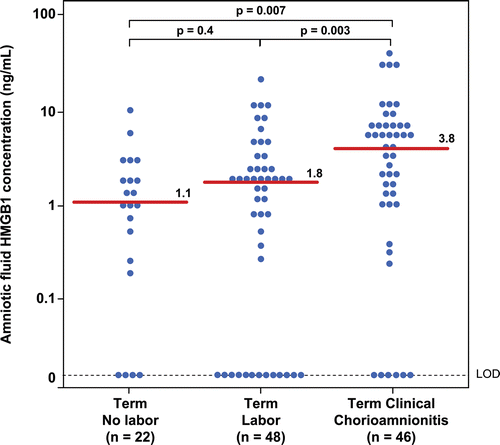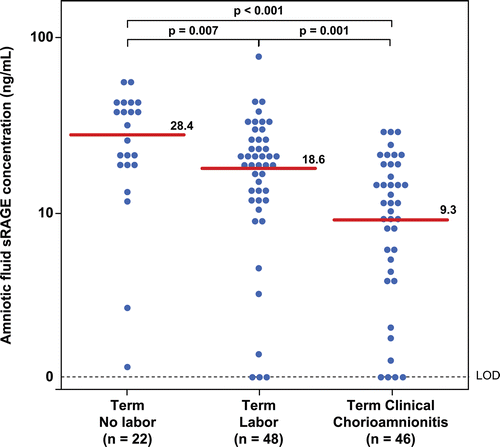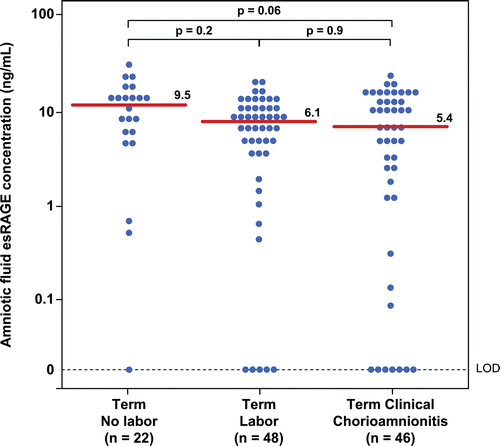Figures & data
Table I. Clinical and obstetrical characteristics of women in the mid-trimester and those at term no labor.
Table II. Clinical and obstetrical characteristics of women at term with and without labor and term with clinical chorioamnionitis.
Figure 1. Amniotic fluid concentrations of high-mobility group box-1 (HMGB1) in women at term with and without labor and patients with clinical chorioamnionitis. Patients with clinical chorioamnionitis at term had a significantly higher median amniotic fluid HMGB1 concentration than women at term with and without labor (clinical chorioamnionitis: median 3.8 ng/mL; range: 0–37.4 ng/mL vs. term without labor: median 1.1 ng/mL; range: 0–8.8 ng/mL; p = 0.007; vs. term with labor: median 1.8 ng/mL; range: 0–21.5 ng/mL; p = 0.003).

Figure 2. Amniotic fluid concentrations of soluble receptor for advanced glycation end products (sRAGE) in women at term with and without labor and patients with clinical chorioamnionitis. Patients with clinical chorioamnionitis at term had a lower median sRAGE concentration than those without chorioamnionitis regardless of labor status (clinical chorioamnionitis: median 9.3 ng/mL; range: 0–29.3 ng/mL vs. term not in labor: median 28.4 ng/mL; range: 1.1–56.8 ng/mL; p < 0.001; vs. term in labor: median 18.6 ng/mL; range: 0–79.8 ng/mL; p = 0.001).

Figure 3. Amniotic fluid concentrations of endogenous secretory RAGE (esRAGE) in women at term with and without labor and patients with clinical chorioamnionitis. There were no significant difference in the median amniotic fluid concentration of esRAGE between patients with clinical chorioamnionitis at term and patients at term with and without labor (clinical chorioamnionitis: median: 5.4 ng/mL; range: 0–18.1 ng/mL vs. term not in labor median: 9.5 ng/mL; range: 0–22.6 ng/mL; p = 0.06; vs. term in labor median: 6.1 ng/mL; range: 0–15.1 ng/mL; p = 0.9).

Figure 4. Amniotic fluid concentrations of high-mobility group box-1 (HMGB1) in women in the mid-trimester and those at term not in labor. There was no significant difference in the median amniotic fluid concentration of HMGB1 between patients in the mid-trimester and those at term not in labor (mid-trimester median: 1.5 ng/mL; range: 0–8 ng/mL vs. term not in labor median: 1.1 ng/mL; range: 0–8.8 ng/mL; p = 0.2).
